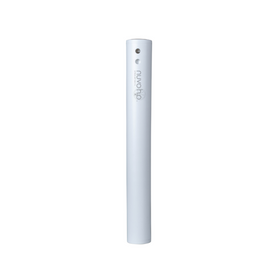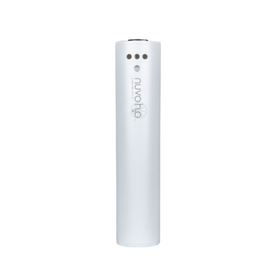
Grey Water Recycling Systems for Homes
Last Updated: Mar 28, 2025Grey water recycling systems for homes are becoming more accessible and more popular for those who wish to reduce their water bills. Utilizing grey water minimizes the burden on septic systems or municipal infrastructure. There are some details to get right, and once a clear vision is in place, this can be another great way to reduce water consumption and wastewater loads.
Table of Contents
- What is Grey Water?
- Is Grey Water Recycling New?
- Are Grey Water Recycling Systems Allowed?
- Are Grey Water Recycling Systems Safe?
- How Does a Grey Water Recycling System Work?
- Are Grey Water Recycling Systems Expensive?
- Does it Make Economic Sense?
- Bottom Line
What is Grey Water?
Some consider the kitchen sink to be grey water, while others view it as black water because of the high organic potential, so keep that in mind. Grey water is the water that goes down the drain from a laundry machine, bathroom sinks, shower, tub, and dishwasher. Grey water may have soaps and some minor amounts of biologicals, but nothing serious. Grey water is not clean drinking water, and it is not blackwater, which is anything that has feces or sewage in it.

Research by the Water Resources Research Center calculated that grey water accounts for 60-65 percent of home water use. By reducing the amount of water leaving our homes and reusing it inside our homes, we can significantly impact our total water consumption. This will more positively impact the environment and save money on your water bills.
Is Grey Water Recycling New?
Perhaps the first example of grey water is in the ancient city of Eshnunna, 50 miles north of Baghdad. This city contains brick sewers connected to water-flushed latrines, embodying modern sewage treatment's essential principles — in 2500 BC.
There is a long history of recycling grey water in residential homes. Our ancestors were sustainable long before it was even a word. Grey water was used for everything in the house except drinking and cooking. Many historic rural farmhouses still in use today have or had grey water systems installed. The most common grey water systems separated the grey water from the sewage to reduce the septic system's strain. Grey water recycling systems were built by piping the laundry and tub drains outside, where people used them for plant irrigation and groundwater recharging. Other heritage systems used grey water for flushing toilets and laundry.
Are Grey Water Recycling Systems Allowed?
As long as you follow the proper plumbing code within your jurisdiction, there should be no issues with grey water use within your home. There are policies already in place in numerous states, and it is in the Plumbing Codes in the US and Canada. Before allowing it in your home, inspectors will want to ensure that clean, potable water lines and grey water lines are clearly marked and separated. Different colored supply lines that are appropriately labeled are essential to creating a safe grey water reuse system. Finally, a conversation with your public health and building officials is critical to success.
If you are going to divert the grey water to your yard for irrigation, numerous guides are available to read from various states.
Are Grey Water Recycling Systems Safe?
The critical detail is making sure that family members and future owners are not drinking grey water in your home. Most of your family members will not drink from the toilet or laundry tub except for your dog. This is where you would most commonly be reusing grey water, so your health is not at risk with a system like this. There are some fantastic and confirming data on the lack of health issues of grey water reuse systems here.
How Does a Grey Water Recycling System Work?
If you are using it for irrigation, drain lines from your grey water sources are plumbed together and run outside, under the soil where they drain into the yard for irrigation. The drain lines cannot be done haphazardly, as the pressure from your laundry tub draining can be pretty damaging to landscaping and root structures. Drip lines, proper layout of drain lines, and types of garden features can help manage the pressure of water to trickle out into your yard.

The other option is to have the grey water stored inside the home and then slowly pumped outside, reducing the high volume, high-pressure concerns of the more straightforward design. Depending on your plumbing or landscaping skills, you can explore both options and find what fits your needs.
If you are reusing grey water inside the home, you will need dedicated drain lines from your sources. These dedicated drain lines will drain into a storage tank. Small system storage tanks should hold enough for 24 hours. More prolonged than that, odors may become an issue without filtration. A pump then moves the grey water from the storage tank to the toilet or laundry for reuse. Remember to label the drain lines for clarity.
Filtration
If you are designing a more extensive system for maximum water savings in your home, you will need to look at a system with filters. Filters will help ensure odors and biological activities do not take hold in the larger storage tank. Manufactured systems explicitly designed for grey water reuse in homes have these built-in. You can install them in the mechanical room with your other sustainable appliances. The grey water reuse systems will come with multiple-stage filter membranes to capture lint, hair, and soaps from the water before sending it back into the home.
Overflow
The storage tanks have built-in overflow valves that will open when too much supply grey water comes into the container. The valve will send the water out of the storage tank and down the sewage system drain lines. The built-in protection prevents the tank from overfilling before reusing the grey water. In addition, manufactured systems have built-in pumps to help ensure the whole system works smoothly for you and your family.
Maintenance
The maintenance of the filters is quite simple. Remove the lid of the storage tank, pull the filters out, clean them in a laundry tub or sink, and replace them as needed. A minimal time commitment, filters should be cleaned twice per year.
Are Grey Water Recycling Systems Expensive?
Do It Yourself grey water recycling systems can be pretty inexpensive. If you are running plumbing drain lines directly outside into the garden, the costs are relatively low. You will need some dedicated drain lines plus labor. You may also want a diverter valve (about $30) that will let you choose if you want the water going down the sewer or into your garden. You can learn more about installing a “laundry-to-landscape” system at greywateraction.org. However, remember that you must comply with your local plumbing code when doing this type of work. Most municipalities require some level of filtration before the grey water goes into the ground, as soaps and detergents can damage plants and groundwater.
Grey water systems used inside the home are more expensive due to a storage tank, filter, and pump requirement. Prices can vary from under $2,000 to around $10,000, depending on the size of your home and the amount of storage and reuse of grey water you wish to have. You are already installing drain lines and supply lines to all of your plumbing fixtures. The difference is that some will be coming and going from your storage tank, others still from the home’s main plumbing line. The difference in plumbing pricing is minimal for this type of work—except for the additional set of pipes.
Does it Make Economic Sense?
The average monthly water bill for a family of four using 100 gallons per person is $70, or $840 per year. If 60 percent of your water bill comes from grey water and you can effectively eliminate that cost, then you will save about $500 per year. So, if your grey water system costs $5,000, it will pay for itself in savings in 10 years. And depending on how much you use water for irrigation, you could save even more. That does not include a water price increase (both supply and sewer fees), so the payback could be faster, depending on your costs.
Bottom Line
Do we need potable drinking water to flush our toilets? Water is becoming more scarce and expensive to treat. The payback for one of these systems might be shorter than you may think. As with so many sustainable investments, recycling your grey water makes environmental and economic sense.
Stephen Collette
Stephen Collette is a Building Biologist, Building Science Consultant, LEED Accredited Professional, and a Heritage Professional. Stephen is the owner of Your Healthy House and lives in Lakefield, ON with his wife and 2 daughters.










